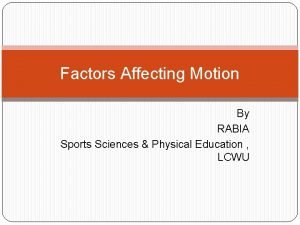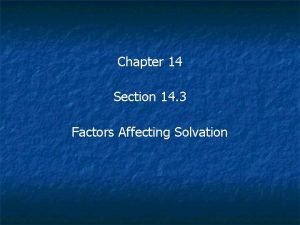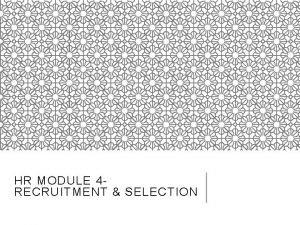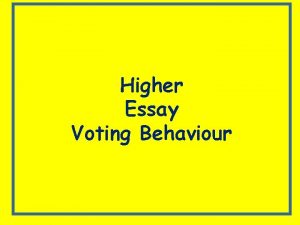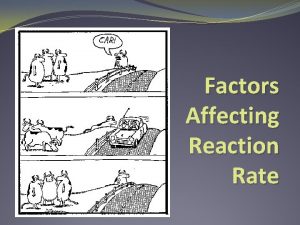Cappadocia NevehirTURKEY INVESTIGATION OF THE FACTORS THAT AFFECT
























- Slides: 24

Cappadocia (Nevşehir-TURKEY) INVESTIGATION OF THE FACTORS THAT AFFECT THE COMMUNITY PARTICIPATION OF HANDICAPPED PEOPLE Gökçen AKYÜREK Pt. 1, Gonca BUMİN Ph. D , Prof 2 1 Kastamonu Rehabilitation Center, Kastamonu, Turkey 2 Hacettepe University, Faculty of Health Sciences, Department of Occupational Therapy, Ankara, Turkey

Participation Becoming a part of life Regulating a person’s life Organized behaviors in a specific social system ◦ ◦ Having education Finding job Getting married Being happy in leisure activities [1] American Occupational Therapy Association. Occupational therapy practice framework: Domain and Process. American Journal Occupational Therapy 2002; 56(6): 609 -639. [2] Mosey AC. Applied scientific inquiry in the health professions: A epistemological orientation. 2 nd ed. Bethesda, MD: AOTA; 1996. [3] Law M, Dunn W, Baum C. Measuring Participation. Law M, Baum C, Dunn W. (eds) Measuring occupational performance: supporting best practice in occupational therapy. 2. ed. Thorofare NJ. Slack Incorporated; 2005. p 107 -126.

What is the reason of planning the study ? In the previous studies, it was observed that the factors affecting social participation are addressed individually and there are no studies examining the impact of all factors on social participation. No study analyzing the social participation of the disabled with various mobility levels has been encountered either.

Purpose To investigate the effects of functional, anxiety status, quality of life, occupational performance and satisfaction, leisure activities and environment on the community participation of disabled people who have different mobility levels. 4

Subjects To be only physically disabled at least 1 year Age ranged between 18 -55 years old Cognitive and mental healthiness Have verbal ability Be volunteer. 5

Demographics 1. 2. 3. 4. 5. 6. 7. 8. Gender Age Education level Business status The marital status Doing sports Mobility level Some living space (work-school, cafe, sport center, club etc. . ) 6

Methodology To evaluate Social participation; WHO DAS II and CIQ, Activity performance COPM, Functional independence; FIM, The effect of environmental factors MQE-SF, Leisure activities LSS-SF, The anxiety level STAI, The quality of life SF-12 were used.

Result I Factors affecting participation (multiple regression analysis) analysis Both WHO DAS II and CIQ scores were significantly affected by these three factors; ◦ Functional independence level, ◦ Vocational status ◦ Mobility level (p<0, 05). When the factors affecting participation were brought under control; ◦ I<II=III (p<0. 05). 8

Result II Findings on the effect of the mobility level on participation and other factors (analysis of variance). When the intergroup difference for the FIM and SF-12 was considered, ◦ I<II<III (p<0. 05) When the MQE and the COPM scores are considered, ◦ I< II=III(p<0. 05). • Other scores were not affected by the mobility level (p>0, 05).

DISCUSSION «vocational status» Affects social significantly. participation , for it has contributed to making them feel that they are a part of society, becoming productive and having ideals. 10

«mobility level» Affects social participation significantly. High mobility level means ◦ higher employment rates, ◦ more advanced educational levels, and ◦ more involved in the community. 11

«functional independence» Has the greatest impact on social participation. I < III It affects the performance of activities. In addition, it may cause the individual to drift away from social life, interpersonal interactions, and/or leisure activities, and may diminish their social participation 12

Just for CIQ; «The educational status» With education less trouble finding jobs easily adapting themselves to society, respect to coping with obstacles, holding on to life/enjoying life struggling for their freedom. Social participation seems to be enhanced with education. 13

Just for CIQ; «activity performance» In COPM; ◦ Grup I has mobility and DLA difficulties; ◦ Grup II. and III have. mobility difficulties. Disabilitylevel requiredenergy 14

Just for CIQ; «leisure activities» Positively affect social participation for CIQ score. I=II=III Enhance interpersonal interaction and communication, positively affect the individuals’ psychological conditions and quality of life. They have favorable effects on enjoying life and, thus, on health and wellness. 15

Just for WHO DAS II; «anxiety» A rise in general anxiety level adversely affected social participation. I=II=III Whether the individuals are at peace with themselves or desperate individuals, they still expressed their concerns for daily life and the future. In addition others in society presented different attitudes of curiosity, and abused or embarrassed them, verbally or, sometimes, through behavior. 16

Just for WHO DAS II; «quality of life» Significantly I affects social participation. <. II < III Most of the participants of our study spent a certain part of their lives somewhere related their situation, and thus the amount of quality time they shared with their families was shortened. Furthermore, they suffer from extraordinary challenges and this situation directly affects the quality of their lives. 17

LİMİTATİONS Most of the participants were active in their lives and were engaged in sports. The limited number of the disabled individuals living in rural areas can be considered as a limitation to our study. 18

STRENGTH The strength of our study is reaching 270 disabled individuals in total, from every region of Turkey. According to the results of the power analysis, what matters is obtaining 90% reliable results. 19

CONCLUSİON… 1 Functional activity training and long-term followups through detailed assessments to be performed by occupational therapists and physiotherapists, and client-centered interventions are important. 20

CONCLUSİON… 2 The vocational trainings of the disabled can be guaranteed and made sustainable such as ensuring flexibility of working hours and times. 21

CONCLUSİON… 3 Increasing the number of artistic, cultural and sportive athletic activities performed by the disabled or for the disabled within our society is necessary. 22

CONCLUSİON… 4 Consequently, activity-related factors affecting the social participation of the disabled should be addressed by client-centered evaluations performed by occupational therapists in future studies. They should be analyzed in a more detailed manner, and occupational therapy interventions should be planned in line with the results to be obtained from the aforementioned studies and analyses. 23

TEŞEKKÜRLER…DHANAYABAD… 24
 Cappadocia climate
Cappadocia climate Tôn thất thuyết là ai
Tôn thất thuyết là ai Phân độ lown
Phân độ lown Chiến lược kinh doanh quốc tế của walmart
Chiến lược kinh doanh quốc tế của walmart Gây tê cơ vuông thắt lưng
Gây tê cơ vuông thắt lưng Block av độ 2
Block av độ 2 Tìm vết của đường thẳng
Tìm vết của đường thẳng Sau thất bại ở hồ điển triệt
Sau thất bại ở hồ điển triệt Thơ thất ngôn tứ tuyệt đường luật
Thơ thất ngôn tứ tuyệt đường luật Hãy nói thật ít để làm được nhiều
Hãy nói thật ít để làm được nhiều Thơ thất ngôn tứ tuyệt đường luật
Thơ thất ngôn tứ tuyệt đường luật What are the factors affecting motion
What are the factors affecting motion Definition of enviromental health
Definition of enviromental health Factors that affect inertia
Factors that affect inertia Factors affect seed germination
Factors affect seed germination Factors affecting optimum weight gcse pe
Factors affecting optimum weight gcse pe Factors that affect reaction time
Factors that affect reaction time Five factors that influence climate
Five factors that influence climate Factors affecting their climate
Factors affecting their climate Factors affecting solvation energy
Factors affecting solvation energy Factors that affect surface currents
Factors that affect surface currents Systemic factors that affect wound healing
Systemic factors that affect wound healing Recruitment yield pyramid
Recruitment yield pyramid 4 factors that affect solubility
4 factors that affect solubility Higher modern studies voting behaviour essay
Higher modern studies voting behaviour essay











